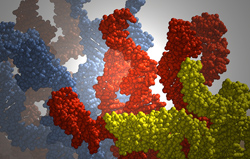A SMART(er) Way to Track Influenza
Brown University researchers have created a reliable and fast flu-detection test that can be carried in a first-aid kit. The novel prototype device isolates influenza RNA using a combination of magnetics and microfluidics, then amplifies and detects probes bound to the RNA. The technology could lead to real-time tracking of influenza. Results are published in the Journal of Molecular Diagnostics.
PROVIDENCE, R.I. [Brown University] — In April 2009, the world took notice as reports surfaced of a virus in Mexico that had mutated from pigs and was being passed from human to human. The H1N1 “swine flu,” as the virus was named, circulated worldwide, killing more than 18,000 people, according to the World Health Organization. The Centers for Disease Control and Prevention in the United States said it was the first global pandemic in more than four decades. (more…)

